- Home
- Leo Tolstoy
Childhood, Boyhood, Youth (Penguin ed.) Page 3
Childhood, Boyhood, Youth (Penguin ed.) Read online
Page 3
Among the many who responded to the long and short works produced by Tolstoy during this initial stage of his career, it was the so-called radical critic and novelist Nikolay Chernyshevsky (1828–89) who was the first to describe that special Tolstoyan emphasis systematically, and to explain what set it apart from the methods of older contemporaries like Ivan Turgenev (1818–83) or revered predecessors like Alexander Pushkin (1799–1837) and Mikhail Lermontov (1814–41) and made it important in the then still brief history of modern Russian literature. In an enthusiastic and startlingly prescient 1856 omnibus review of Tolstoy’s writings thus far (including the above-mentioned Sevastopol Sketches and the publication of Childhood and Boyhood together in book form with the cuts restored, thanks to a relaxation of censorship after the death of Nicholas I in 1855), Chernyshevsky identified as ‘distinctive features’ of Tolstoy’s ‘talent’ his ‘extraordinary capacity for observation, subtle analysis of mental impulses, precision and poetry in the pictures of nature and elegant simplicity’, and then added in a more fundamental summarizing characterization:
Count Tolstoy is concerned above all with how feelings and thoughts develop from other feelings and thoughts. He is interested in seeing how a feeling spontaneously emerging from a given situation or impression, and yielding to the influence of memories and the power of associations produced by the imagination, is turned into other feelings, goes back to its original starting point, and then wanders off again and again, changing along a whole series of memories; how a thought produced by an initial sensation leads to other thoughts and is carried away further and further, combining daydreams with real sensations and dreams of the future with reflections about the present. Psychological analysis may tend in various directions: one poet will be interested above all in the delineation of character; another, in the influence on character of social relations and everyday encounters; a third, in the link between feelings and actions. Count Tolstoy is interested above all in the psychic process itself, in its forms and laws, in the dialectic of the mind …’15
This definition of what is offered as the essence of Tolstoy’s method is, with its frequently repeated Hegelian tag, a founding text of the critical line that sees Tolstoy primarily as a master psychologist, a pioneer literary investigator of conscious and unconscious states and their behavioural correlates. And it is undeniably true that the trilogy and Tolstoy’s other works of the 1850s are, like the great masterpieces that would follow, profoundly attentive to the multilayered interplay of feelings and thoughts under the pressure of external circumstances and internal conditions. The depiction of the trilogy’s numerous characters, but especially of the evolving inner life of the narrator, Nikolenka, is indeed remarkable for the subtlety and depth of its psychological and moral insight.
Reading the novel’s three parts with their ever-expanding scope, their constantly widening circle of interaction and experience, as Nikolenka moves from the safe embrace of country family life at the beginning of Childhood to the large questions of social and moral identity with which he struggles on the threshold of adulthood at the end of Youth, one always has the sense of encountering not so much conventional fictional projections, however striking or memorable, of concepts of human personality and situation (the sense that one may have reading Dickens, for example), as actual human beings whose complexity is never compromised for a thematic argument or rhetorical manoeuvre, who are never reduced to mere types, but remain fully, intractably, elusively themselves, whatever their angle of presentation, be it critical or comical or admiring or, as usually happens, some dynamic blend of all three. Why the trilogy’s characters have such human vitality, why readers have returned to the book with such interest and pleasure for so many generations, may, of course, be deemed a mystery, the mystery of any enduring work of art. But for all the attraction of that easy formula, it must be said that there really are sound explanations for that interest and pleasure, and that a principal one lies with Chernyshevsky’s insight about the illuminating sensitivity and reach of Tolstoyan psychologism, about Tolstoy’s uncanny mastery, even at this early stage of his career, of the complex, shifting mechanisms of personality – of the ‘dialectic of the mind’ as we know and feel its movement within ourselves, whoever and wherever we may be.
Yet for all the explanatory value of Chernyshevsky’s insight into the innovation of Tolstoyan psychologism, there is another, no less important aspect of Tolstoy’s art that Chernyshevsky’s approach fails to engage: its profoundly empirical apprehension of the objective world; its awareness of the manifold parts and relations of that world, and of the various ways they impinge on human activity, and circumscribe or enable or enrich it. Tolstoy was, it would not be too much to say, a kind of Russian Adam, a first namer of things, a writer who vastly enlarged the purview of the literature of his day, and whose powers of observation were no less wide-ranging than deeply penetrating. He is a writer who is seemingly interested in everything, whether the shape and structure and arrangements of the spaces – the rooms and buildings – his characters inhabit; or the diverse details of the personal dress of boys and girls and men and women of different social conditions and circumstances; or the kinds of conveyances they use, along with descriptions of vehicular technology and function; or agricultural practices; or the customs and procedures of hunting; or the different kinds of dog and horse and their peculiar behaviours, both individual and generic (indeed, dogs in the trilogy may, in the vividness of their portrayal, even emerge as characters: the Borzois Milka and Zhiran in Childhood, for example, or Lyubov Sergeyevna’s little Bolognese in Youth); or the diversity of plant and insect species and, again, their behaviour (Tolstoy’s sense of the intentionality of plant life is almost palpable: for example, the extraordinary description of the raspberry thicket, of the interaction of the corporeal self with the world of nature already mentioned in regard to Chapter Thirty-two of Youth); or the precisely registered modulations and transformations, the behaviour, of meteorological phenomena (the long rhythmic arc of the description of the thunderstorm in Chapter Two of Boyhood that Nekrasov mentioned in his letter, or the various other descriptions of clouds, rain and snow, of sunlight and moonlight); and so on. Everything that touches on the characters, or that occurs in and around them, or that is capable of being observed by them, is fully identified, is brought out of the perceptual penumbra into the bright light of consciousness and shown to have a place, a function, a meaning.
That irrepressible cognitive impulse and powerful sense of the intricate interdependence of things pervades the trilogy, and it is this force that ultimately drives the narrative, whatever its immediate subject, whether internal and psychological or external and circumstantial. Tolstoy was not only a supremely rationalistic investigator of feelings and ideas about the world, and the ways they interact and change and manifest themselves in personalities, he was also a gifted poet of material fact, and he shows that fact to us in unprecedented detail with all its colours and sounds and textures and smells vibrantly intact. As Nikolenka puts it on what we may take to be Tolstoy’s own behalf in the coda to a splendidly picturesque description of agrarian nature in Chapter Seven of Childhood:
The voices of people, the clattering of horses and carts, the merry chirping of quail, the hum of insects hovering in motionless swarms, the smell of wormwood, straw and horse sweat, the myriad colours and shadows the scorching sun cast upon the light-yellow stubble, the distant blue wood and pale-lilac clouds, and the white gossamer carried through the air or lying across the stubble – all that I saw, heard and felt.
This poignant concluding declaration pertains, as is always the case in Tolstoy, to a very specific, very concrete moment of experience and memory, but it may also stand as a kind of summary of the stance of the trilogy as a whole: its eager receptivity to the phenomenal world and its scrupulous representation of that world’s extraordinary multiplicity, complexity and beauty.
There is, of course, much m
ore to say about the trilogy – about its forms, structure, evolving technique and themes – than may even be alluded to, let alone addressed, in a brief introduction. For although the trilogy lacks the scale and integrative power of Tolstoy’s masterpieces, it is nonetheless a work of genuine subtlety and art in its own right, a small classic of durable psychological and social insight and compelling charm. Tolstoy had by the end of his long and extraordinarily productive life (he died at the age of eighty-two in 1910) become an internationally famous literary artist and inspiring moral thinker, whose collected works would, in their standard Russian edition, reach an astonishing one hundred volumes and include many permanent additions to the canons of world literature and philosophy. He was a complicated but always fascinating figure, whose 2010 centenary inspired popular films and other expressions of public esteem, and whose writings have, in the numerous languages into which they have been translated, reached far more readers than he enjoyed in his own lifetime or could ever have foreseen.
Yet even writers and thinkers of such enormous power and lasting achievement must have their more modest beginnings, must take their first steps in search of their distinctive voices and styles and subjects and their roles within the human cultures that give them being and nourish and sustain them. Tolstoy was no exception to that rule, and the work in which he took those first steps, the one in which he laid the groundwork for the great edifice that would follow, was, of course, the trilogy. Although there are many other reasons for its continued presence in our reading life, the last is perhaps sufficient in itself. The trilogy allows us to see Tolstoy’s preoccupations as an artist and thinker in their initial form; it shows us, as perhaps no other work of his can, how those preoccupations developed, how his ideas about human nature and the world first engaged the world and then were changed and modified by his growing experience of it – by his intellectually powerful and morally serious examination of its myriad parts and relations and the ways they ineluctably shape us and then are shaped by us in turn.
Further Reading
TRANSLATIONS
The following two editions are very well translated and annotated, with detailed indexes and excellent contextual commentary, and are highly recommended for their great literary interest and biographical value.
Christian, R. F. (ed. and trans.), Tolstoy’s Letters, 2 vols (New York: Charles Scribner’s Sons, 1978).
— (ed. and trans.), Tolstoy’s Diaries, 2 vols (New York: Charles Scribner’s Sons, 1985).
BIOGRAPHIES
Despite his literary and cultural importance and enduring place in the English-speaking world, and the vast literature in English devoted to his art and thought and to various aspects of his life and career, there is unfortunately no recent biography of Tolstoy in English of genuine scholarly authority and reach, let alone literary merit. The Russian Formalist scholar Boris Eikhenbaum’s superb Lev Tolstoy (Leningrad, 1928–31) remains, eighty years on, the most thorough examination of Tolstoy’s early and mid-career in the context of the evolving literary culture of his day, but only the second part is available in English: Tolstoi in the Sixties, trans. Duffield White (Ann Arbor: Ardis, 1982), and it is, in any case, largely indifferent to details of private history. The works cited below, however, are good sources of information about that private history, especially the Maude and Simmons contributions, while the other two books, although confidently written and often entertaining, are unfortunately marred by trite, melodramatic conjecture and careless factual errors, and should be used with care.
Maude, Aylmer, The Life of Tolstoy, 2 vols, revised edition (Oxford: Oxford University Press, 1930). First published in 1908–10.
Simmons, Ernest J., Leo Tolstoy, 2 vols (New York: Vintage Books, 1960). First published in 1946.
Troyat, Henri, Tolstoy, trans. Nancy Amphoux (New York: Grove Press, 2001). First published in 1967.
Wilson, A. N., Tolstoy (London: Hamish Hamilton, and New York: W. W. Norton, 1988).
CRITICISM
Although the critical literature devoted to Tolstoy in English or English translation is very large, as I have indicated, it has tended to neglect his early writings. Nonetheless, the following studies are of particular relevance to the trilogy, either for their direct discussion of it or their examination of larger issues of genre, style and form, and (in the case of Sir Isaiah Berlin par excellence) of Tolstoy’s thought and its provenance.
Bayley, John, Tolstoy and the Novel (London: Chatto & Windus, 1966).
Berlin, Isaiah, ‘The Hedgehog and the Fox’ and ‘Tolstoy and Enlightenment’, in his classic Russian Thinkers, ed. Henry Hardy and Aileen Kelly (New York: The Viking Press, 1978).
Christian, R. F., Tolstoy: A Critical Introduction (Cambridge: Cambridge University Press, 1969).
Eikhenbaum, Boris, The Young Tolstoy, ed. Gary Kern (Ann Arbor: Ardis, 1972). Original first published in 1922.
Ginzburg, Lydia, On Psychological Prose, ed. and trans. Judson Rosengrant (Princeton: Princeton University Press, 1991).
Gustafson, Richard F., Resident and Stranger: A Study in Fiction and Theology (Princeton: Princeton University Press, 1986).
Knowles, A. V., Tolstoy: The Critical Heritage (Boston: Routledge and Kegan Paul, 1978).
Orwin, Donna Tussing, Tolstoy’s Art and Thought, 1847–1882 (Princeton: Princeton University Press, 1993).
— (ed.), The Cambridge Companion to Tolstoy (Cambridge: Cambridge University Press, 2002).
—, Consequence of Consciousness: Turgenev, Dostoevsky, Tolstoy (Stanford: Stanford University Press, 2007).
Wachtel, Andrew Baruch, The Battle for Childhood: Creation of a Russian Myth (Stanford: Stanford University Press, 1990).
Williams, Gareth, Tolstoy’s ‘Childhood’ (Bristol: Bristol Classical Press, 1995).
Zweers, A. F., Grown-up Narrator and Childlike Hero (Paris and The Hague: Mouton, 1971)
Note on the Text and Translation
The translation is completely new and is based on a study of the young Tolstoy’s language in relation both to its social and historical context and to its use within the trilogy as a self-contained work of art – in relation, that is, to how the language may reflect a particular time and place (Russia in the 1840s and 1850s), yet acquire distinctive internal meaning and resonance as its elements are arranged according to Tolstoy’s own cognitive and aesthetic purposes.
The source text of the translation is that in the most recent and authoritative Russian academic edition of Tolstoy’s Complete Collected Works.1 That text was compared with earlier versions, including those published in The Contemporary, as well as with material abandoned or cut by Tolstoy, a relentless reviser.2
In view of the distance between our own time and that of the trilogy, and the extraordinary specificity of Tolstoy’s depiction of his world, the translation has been furnished with endnotes. They are meant to provide background information of the sort that Tolstoy’s first readers would have brought to the work and that he clearly assumed them to have. For English-speaking readers, that information includes translations of the German and French phrases used in the text, identification of its geographical, cultural, historical and literary references, and clarification of its social and material world, including the technologies current in Tolstoy’s day, since he is, as I have indicated, interested in everything that touches his characters, describing it with unprecedented exactitude, and bringing to bear for that purpose the full lexical range of the Russian language. That language, it should be observed, is less the received literary instrument of Tolstoy’s time (roughly the middle style established by Pushkin) than it is the vernacular usage of his own highly educated, polyglot milieu, augmented with terminologies from a wide variety of subjects and spheres. The sheer extent of that uniquely Tolstoyan variety is, for many, a source of the great pleasure of the trilogy, of the satisfying sense that his representations have a firm empirical grounding and a rigorous conceptual order – t
hat he is, in fact, showing us exactly how things are, exactly how they look and work and feel and act upon or exist in greater or lesser proximity to the particular human experience he is portraying.
Some items of Tolstoy’s vocabulary are, as has been indicated above, historically specific, and they have been glossed in the notes accordingly, while others are bound to individual characters, to their speech habits or physical attributes or gestures, or mark thematic motifs (in which case the verbal link has been scrupulously repeated in the translation), or denote with almost ethnographic or scientific zeal particular features of social behaviour or aspects of the natural and material world. Whether because the Russian language has changed in subtle ways since Tolstoy’s time and blurred or obscured distinctions that were important for him, or because of what might be called a rashly assimilative translation philosophy, or simply because of haste, there has been a tendency in English versions of the trilogy (and not only of the trilogy) to substitute broad generic terms for Tolstoy’s much more specific notations. There are numerous examples of this tendency, but a simple and telling one is the translation in Youth of the unusual Russian word bolonka. It has been variously rendered as ‘small dog’, ‘lapdog’ and even ‘spaniel’, whereas it in fact means a Bolognese, a small breed of the Bichon type still popular today. As such, the word has a distinct function in the text. It conveys (or in its denotation metonymically projects) something of the identity and personality of the pet’s owner, the peculiar Lyubov Sergeyevna, and it imparts a far more vivid, even oddly familiar sense of her world and its possibilities than does ‘small dog’. Tolstoy used the word bolonka, that is, because he wanted the concrete, particular meaning it brought, and not some colourless verbal marker lacking nuance or depth. I have dwelt on this seemingly minor point because I think it is an important one that concerns not so much the accurate translation of a single term as it does the preservation of a fundamental Tolstoyan principle. The trilogy’s lexical variety and precision are not merely a feature of its style in some inadvertent or formal sense, but rather, and much more importantly, a reflection of its cognitive orientation and method, of its semantics and perhaps even of its phenomenology.

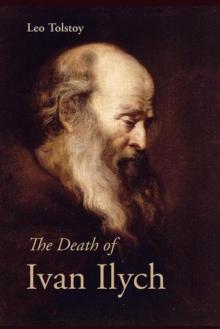 The Death of Ivan Ilych
The Death of Ivan Ilych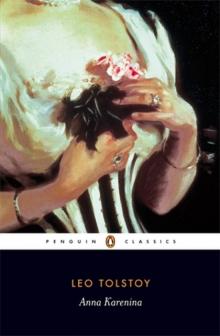 Anna Karenina
Anna Karenina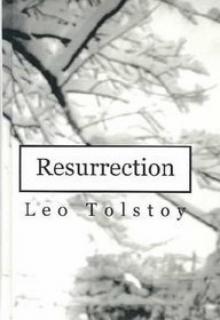 Resurrection
Resurrection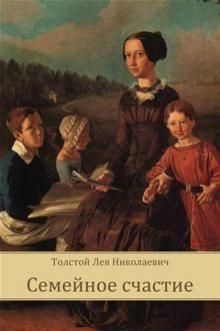 Family Happiness
Family Happiness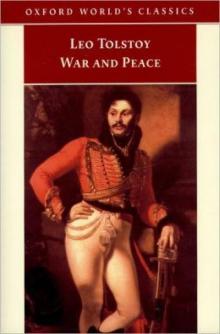 War and Peace
War and Peace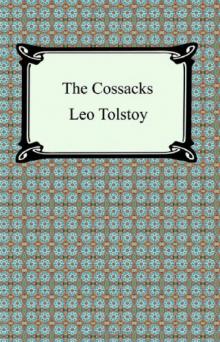 The Cossacks
The Cossacks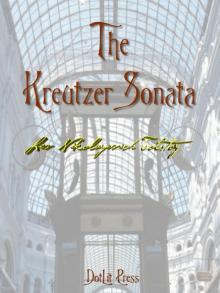 The Kreutzer Sonata
The Kreutzer Sonata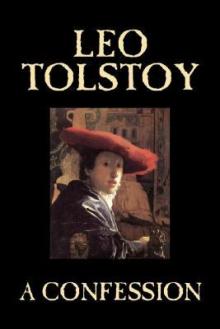 A Confession
A Confession The Kingdom of God Is Within You
The Kingdom of God Is Within You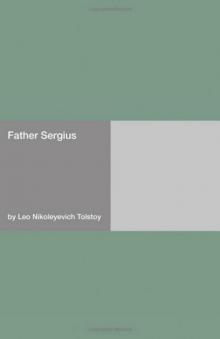 Father Sergius
Father Sergius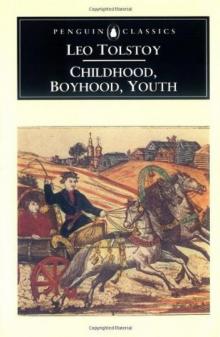 Childhood, Boyhood, Youth
Childhood, Boyhood, Youth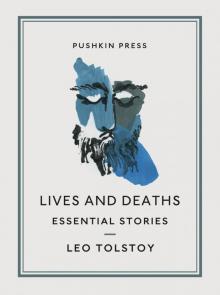 Lives and Deaths
Lives and Deaths The Devil
The Devil The Death of Ivan Ilyich and Master and Man
The Death of Ivan Ilyich and Master and Man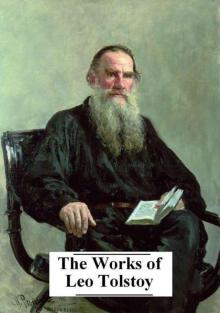 The Complete Works of Leo Tolstoy (25+ Works with active table of contents)
The Complete Works of Leo Tolstoy (25+ Works with active table of contents)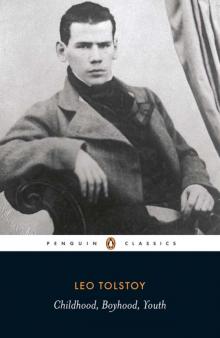 Childhood, Boyhood, Youth (Penguin ed.)
Childhood, Boyhood, Youth (Penguin ed.) The Power of Darkness
The Power of Darkness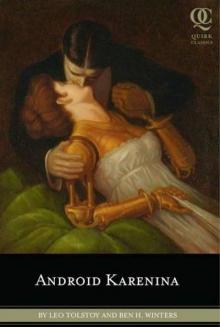 Android Karenina
Android Karenina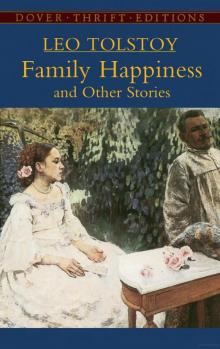 Family Happiness and Other Stories
Family Happiness and Other Stories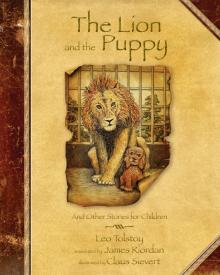 The Lion and the Puppy
The Lion and the Puppy Collected Shorter Fiction, Volume 2
Collected Shorter Fiction, Volume 2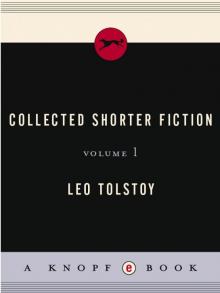 Collected Shorter Fiction, Volume 1
Collected Shorter Fiction, Volume 1